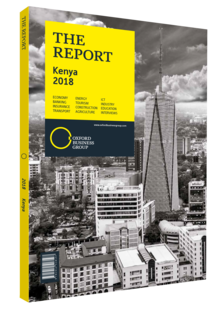Agnes Kalibata, President, Alliance for a Green Revolution in Africa: Interview

Interview: Agnes Kalibata
How can Africa’s agriculture industry be improved?
AGNES KALIBATA: It is important that governments prioritise investment in infrastructure to drive agricultural productivity, open up markets and increase private investment in the sector. Without infrastructure, the sector cannot grow. A lack of infrastructure is a particular issue in rural areas, which are the centre of agricultural production. Rural areas need roads, especially feeder roads, in order to connect farmers to input and output markets. Infrastructure for post-harvest handling of produce, including aggregation facilities where farmers collect their produce for sale and drying infrastructure to reduce post-harvest losses, is also needed. Additionally, irrigation infrastructure is key to securing yields in the event of drought. This area has huge potential as less than 6% of Africa’s arable land is irrigated.
Moreover, investment in energy infrastructure is a critical stimulus for industrialisation. This will require investment in affordable energy infrastructure, as one of the key constraints to manufacturing in Africa and growth of the industrial sector is the cost of energy and the resultant lack of competitiveness.
What kinds of policy can further encourage the development of irrigation systems in Africa?
KALIBATA: Irrigation in Africa is constrained by three main factors: First, the irrigation models available focus on large-scale activities, whereas 80% of African farmers are smallholders. Second, the skills base to develop irrigation technologies is very weak. Third, the financial requirement in terms of capital investment is huge. Achieving food security calls for a shift from over-reliance on large-scale irrigation to a hybrid that accommodates the needs of small-scale, household farms. This is becoming increasingly possible as technologies like solar-powered water pumps are made available to help smallholder farmers adapt to the changing climate.
Governments should also provide financial incentives and make accessing irrigation affordable to farmers. Large-scale irrigation can also benefit from government support through a reduction in the cost of equipment by removing taxation and providing affordable financial tools. This will encourage the private sector to invest in irrigation. Africa should explore a large-scale irrigation infrastructure model that allows farming communities across the continent to connect and use water at a fee. This is a common model in Asia, and as a result, 44% of Asia’s agriculture is currently irrigated.
To what extent does land ownership impact land use for agricultural purposes?
KALIBATA: Very few African countries have policies that define how land is used between competing needs. As a result, most developments are not a product of a well-planned process. There is therefore a need to thoroughly define land ownership, as it impacts how farmers think about the value of land and what they could use it for. For example, Rwanda, despite having one of the lowest amounts of land per capita in Africa, has a completely liberalised land policy. This framework acts as an incentive for households to obtain financing to invest in land improvement – for instance, by investing in better seeds, fertilisers and other technologies. However, even under such an organised system, there is still work to be done on plot allocation for agricultural purposes to ensure optimal land use.
How else can smallholder farm yields be increased?
KALIBATA: Smallholder farming in Africa depends a lot on rain-fed agriculture. A green revolution in Africa would have to be backed up by solid knowledge of agro-ecology as the continent’s lands are extremely diverse. Farmers would need better-performing seeds and fertilisers, and better access to financial instruments that enable them to acquire technologies, including those that reduce harvest loss. More importantly, farmers will need access to structured markets to grow their business and to farm sustainably.
You have reached the limit of premium articles you can view for free.
Choose from the options below to purchase print or digital editions of our Reports. You can also purchase a website subscription giving you unlimited access to all of our Reports online for 12 months.
If you have already purchased this Report or have a website subscription, please login to continue.

